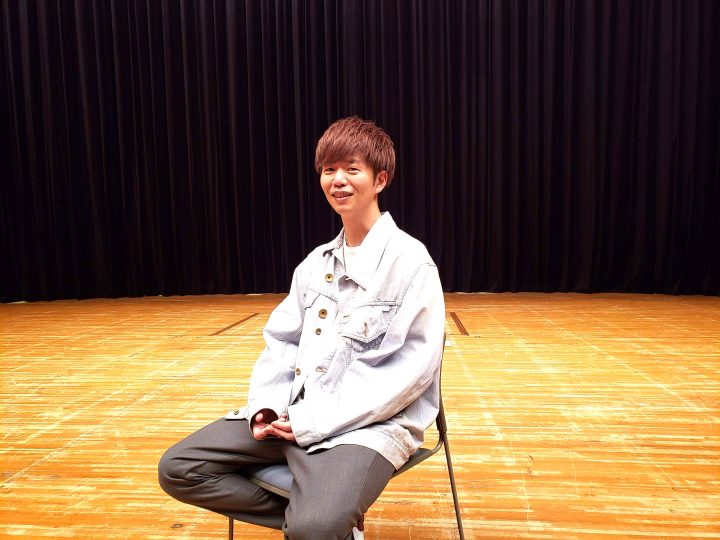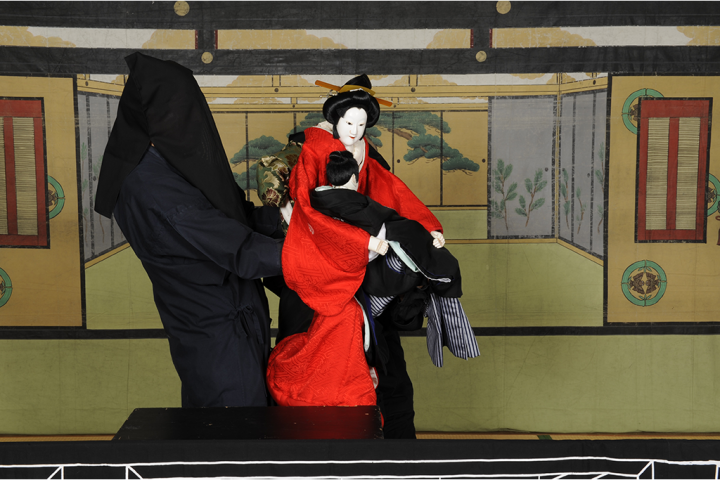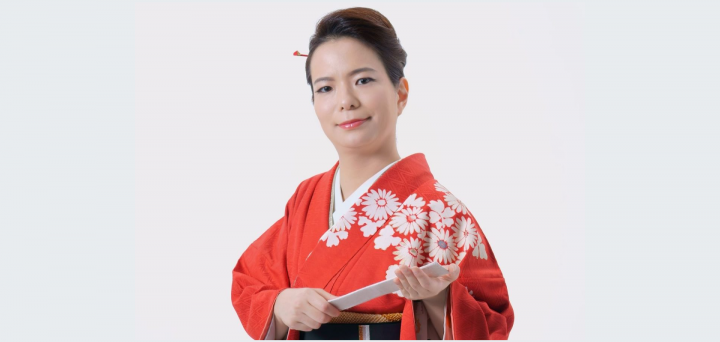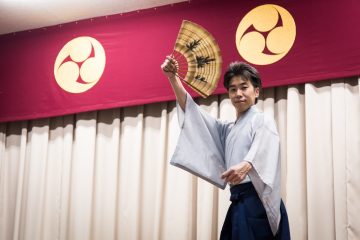Enjoy watching and learning about the world of Kyogen
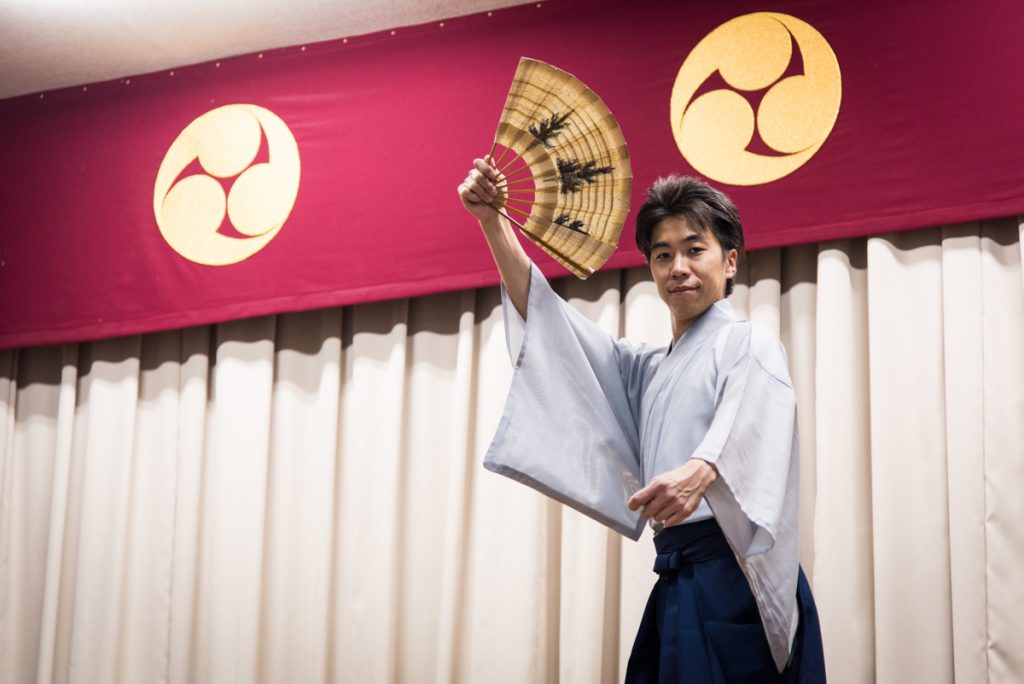
The stage for Kyogen performers living in the 21st century
Vol.3 Enjoy watching and learning about the world of Kyogen
Ozo doctrine (Noh performer Kyogen style Ozo school)
Did you know that anyone can learn Kyogen?
Both my father and grandfather worked to popularize Kyogen by running a so-called "training hall," or dojo. Many people of all ages and genders learned Kyogen there, and I too have been training among them since I was a child.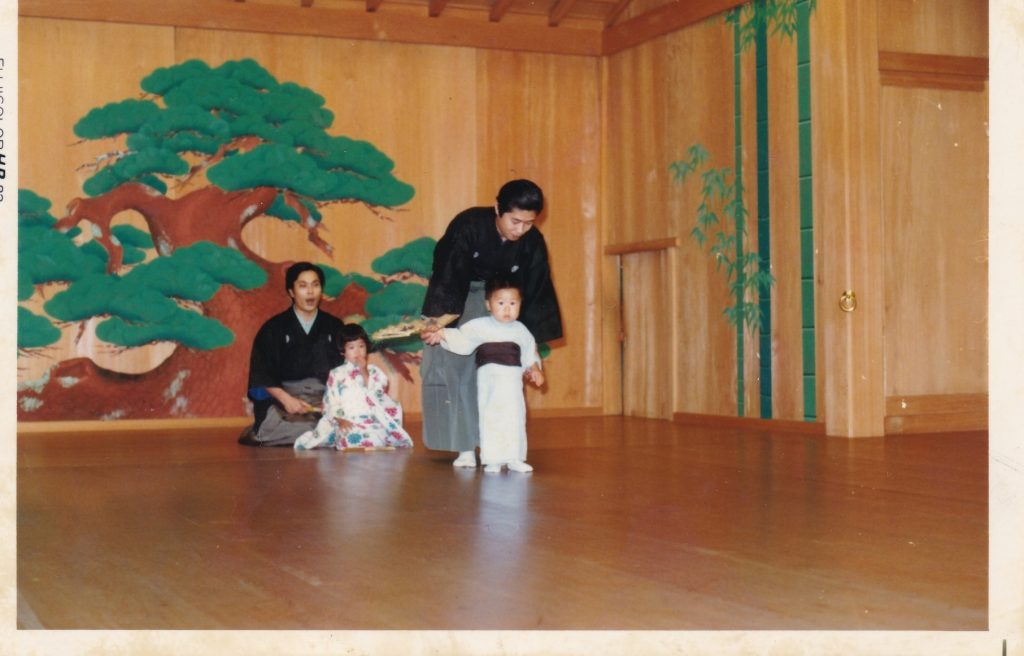 * Age 2. First time practicing on the Noh stage.
* Age 2. First time practicing on the Noh stage.
I was once asked, "Is Kyogen something to learn, not something to watch?" I could answer, "Because both my father and grandfather taught it," but there were times when I reflected on myself and wondered, "Why am I teaching it?"
In the past, Oda Nobunaga, Toyotomi Hideyoshi, Tokugawa Ieyasu and others performed Kyogen themselves, and other feudal lords also learned from them. The Okura family also taught Kyogen to town actors and performed in events such as Kanjin Kyogen, so there is no doubt that teaching has been around for a long time.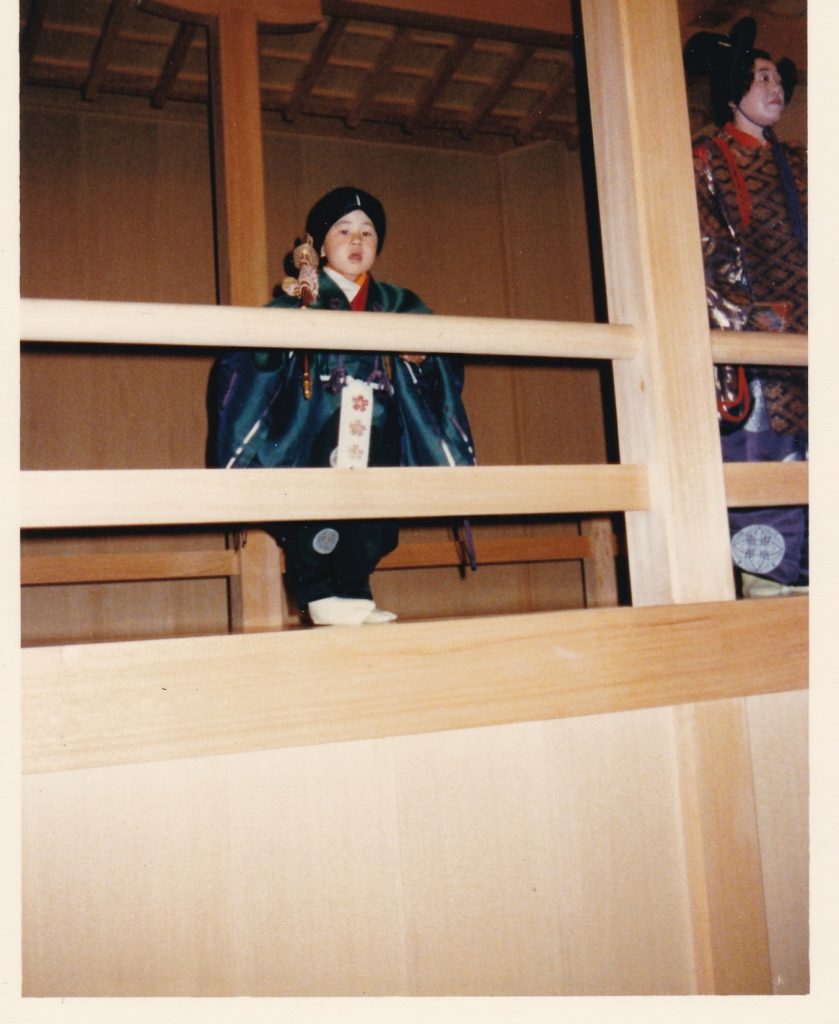 *Age 4. First stage performance. Co-starred with his grandfather's apprentice in "Narihira Mochi."
*Age 4. First stage performance. Co-starred with his grandfather's apprentice in "Narihira Mochi."
Kyogen has a repertoire of 180 pieces, but there may be a limit to how much you can learn and pass them on to the next generation without forgetting them all. However, if you refresh your memory by teaching others, you will not forget what you have learned. Also, by teaching repeatedly, you can gain a deeper understanding of the piece and improve your form. In the process of teaching, you will often discover things like, "Ah! So that's what it means!" Furthermore, rehearsals are done without using audio sources, meaning you keep speaking almost all day, which also leads to the improvement of your own art and vocal training. You could say that "you are being taught by teaching."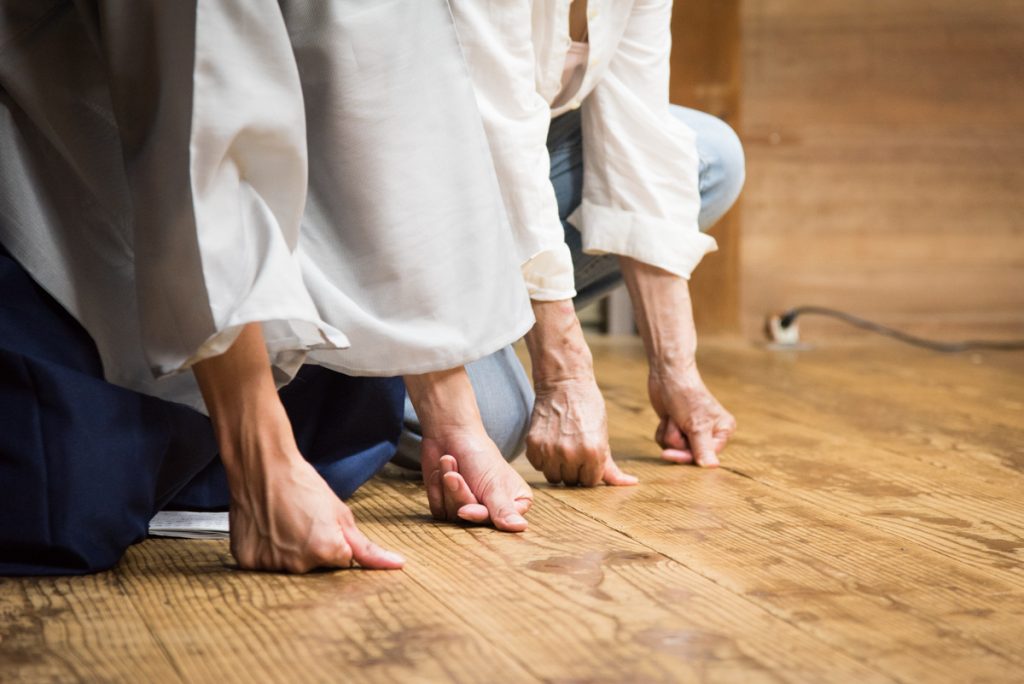
On a personal note, I got married and moved to Nakanoshima (Tama Ward, Kawasaki City). Around the same time my child was born, I went to visit the local deity, Nakanoshima Inari Shrine, and there was a Kagura hall there.
This is where Kyogen can be performed.
With that in mind, I immediately called the chief priest, and he gladly provided it to me.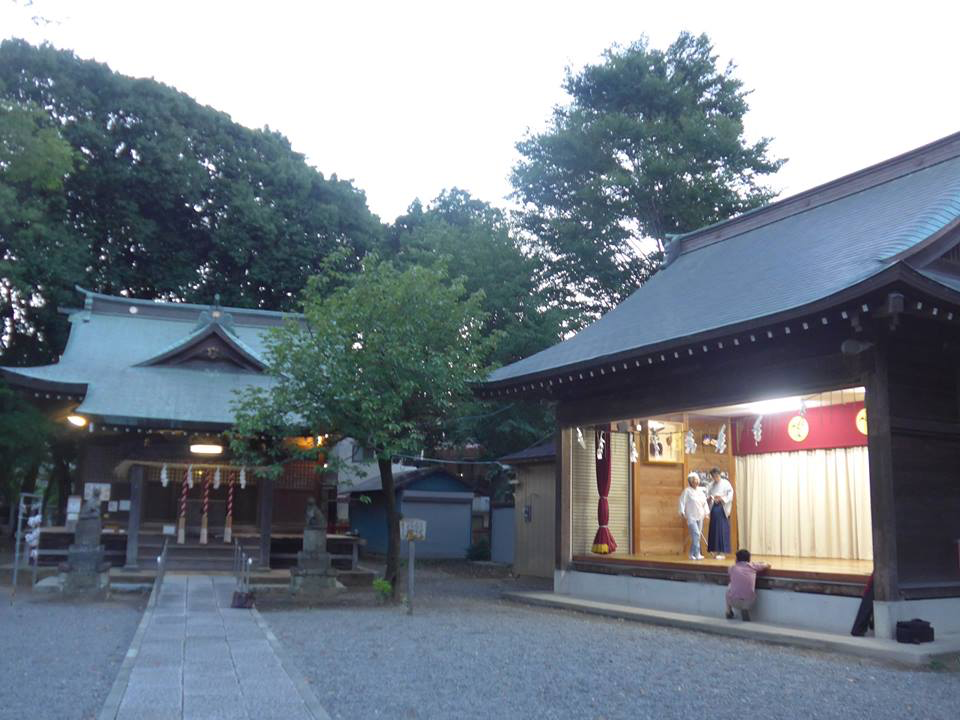
It was around the time of the Great East Japan Earthquake. Many of the customers who participated in my self-organized "Kyogen LABO" were involved in activities rooted in the local community. This keyword overlapped with mine, and I started thinking about the concept of "community."
The word "community" refers to a place, but I think it also means "living" in the "earth." It means valuing the place where you live now and enriching it. And by improving the environment, the circle of people will expand and the town will become a more livable place.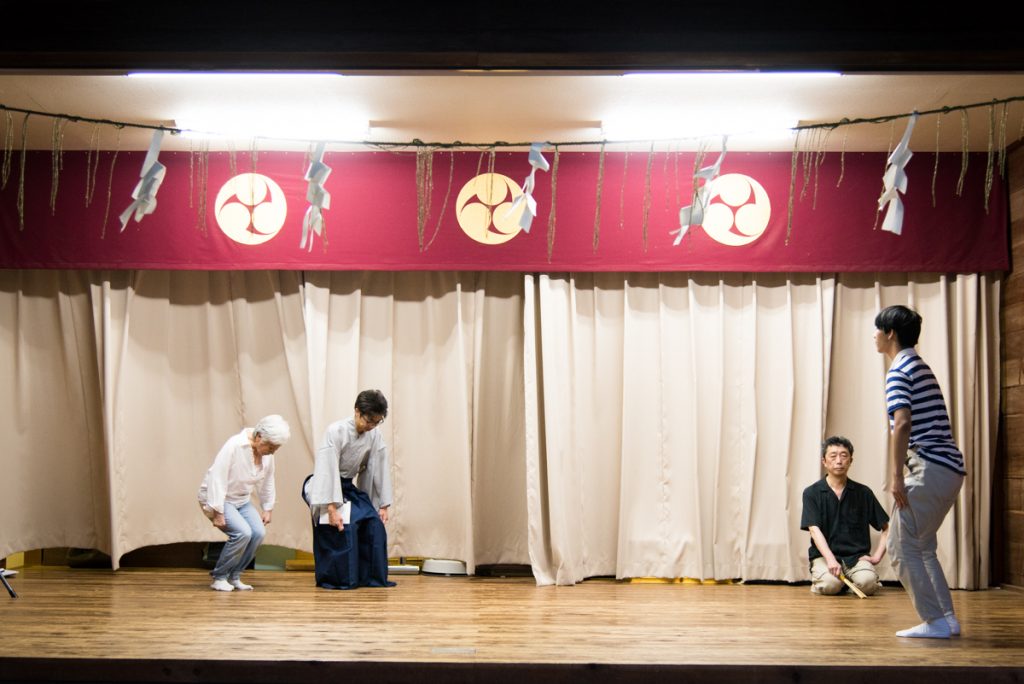
Furthermore, I want the children who grow up there to experience a lot of nature and culture. Exposure to culture opens the mind, leading to self-discovery and discovery of others, and the development of individuality and respect. It was for these reasons that I started a Kyogen class in Nakanoshima.
In reality, it wasn't easy to attract audiences, but now we have seven students who are enjoying learning Kyogen.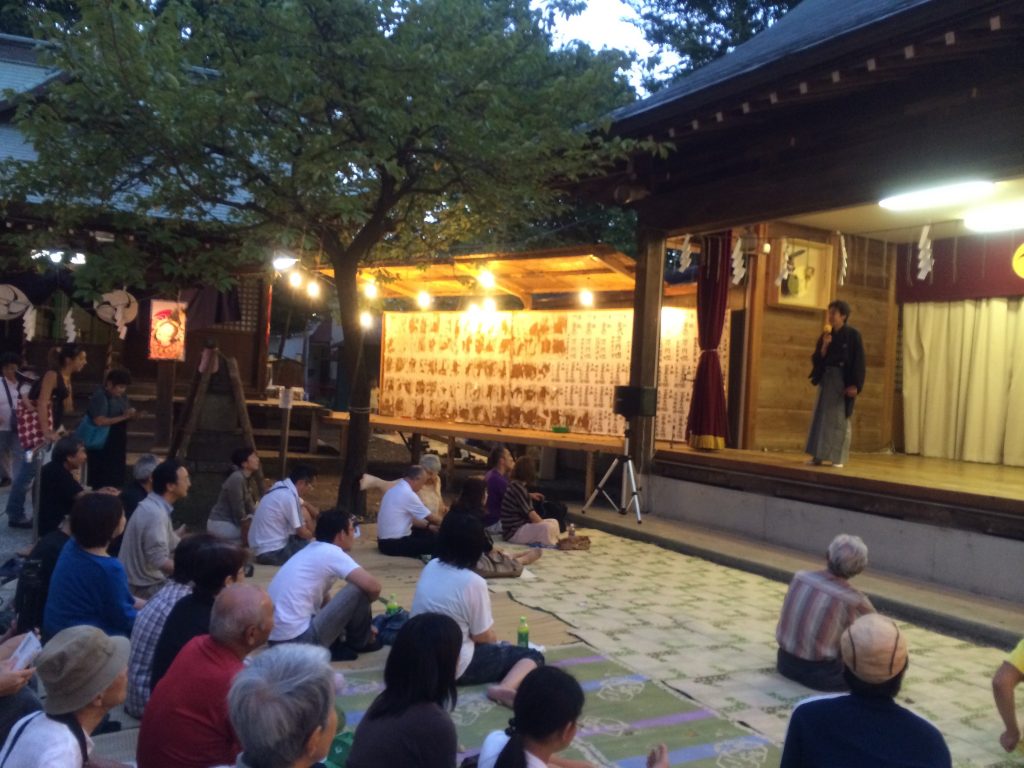 *The first Nakanojima Inari Shrine Kyogen performance
*The first Nakanojima Inari Shrine Kyogen performance
And this year, on Saturday, October 6th, there will be a dedication Kyogen performance by all the students of the school. This will be the sixth time, and we are proud of this activity that is deeply rooted in the local community. We hope that we can convey the generosity and humor of Kyogen to many people in the local community.
